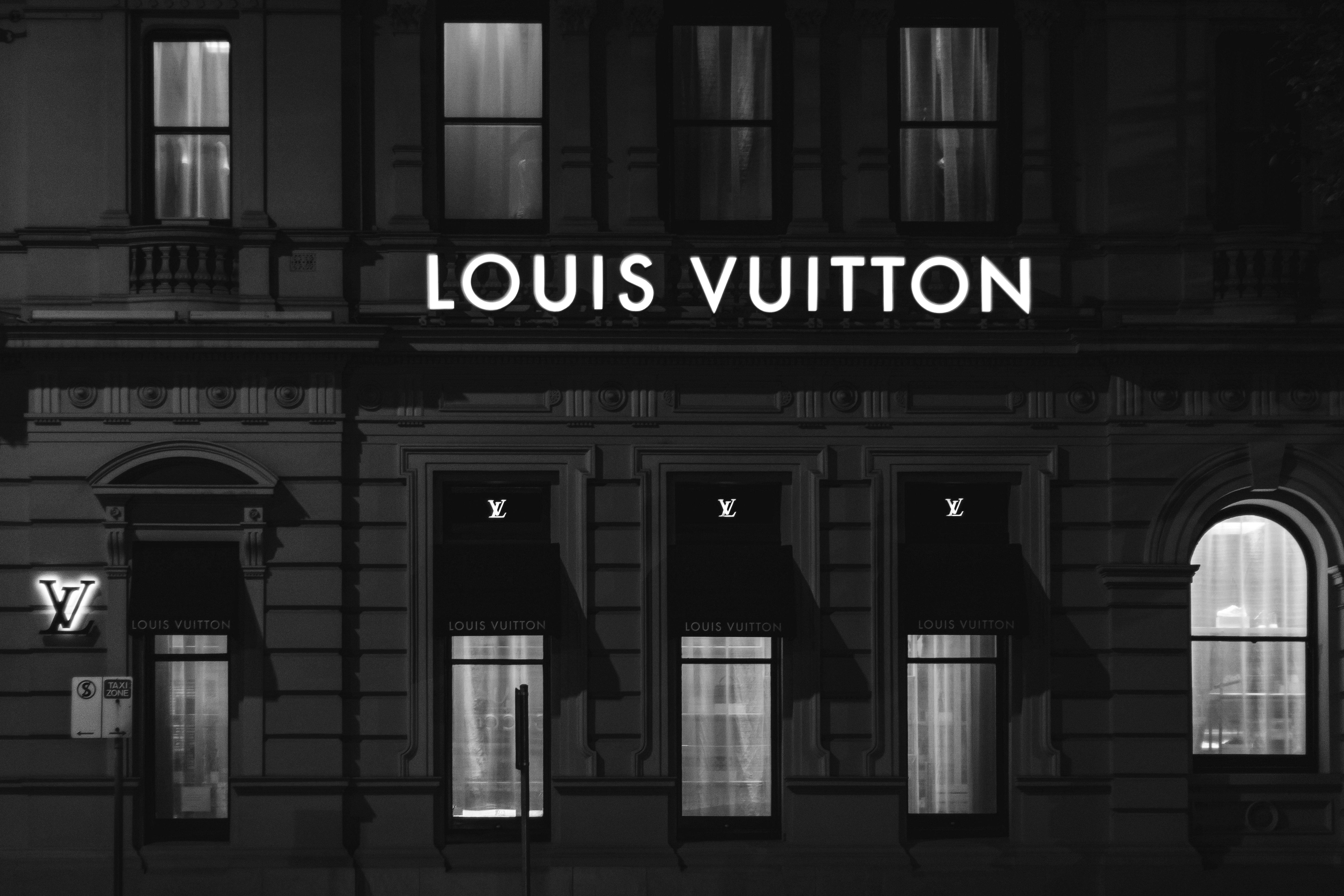
Louis Vuitton's signature “LV” monogram loses on both confusion and link in its opposition against couple’s application to register a logo mark for “L V Bespoke.”
Background
On 6 December 2021, Lawrence and Victoria Osborne (the “Applicants”), filed an application for the below trade mark, the “L V Bespoke Logo.”

The application covers goods in class 6, mainly relating to metal plant supports and similar goods, and all in relation to “plant and planting, garden and gardening apparatus, equipment and paraphernalia;” as well as various plants in class 31.
Louis Vuitton (the “Opponent”) opposed the application under ss. 5(2)(b), 5(3), and 5(4)(a) of the Trade Marks Act 1994, relying on its signature LV monogram rights, as shown below.
- Earlier Mark 1
 : likelihood of confusion
: likelihood of confusion
Class 6: common metals and their alloys; metal components for leatherwear especially closure systems, plates, locks, padlocks, handles, buckles, buttons (handles)
- Earlier Mark 2
 : reputation/unfair advantage and passing off
: reputation/unfair advantage and passing off
Class 3: perfumes; perfumery products
- Earlier Mark 3
 : reputation/unfair advantage and passing off
: reputation/unfair advantage and passing off
Class 18: including trunks, travelling bags, chests, bags, handbags, pocket wallets, purses, card holders etc.
Class 25: clothing
The Opponent was put to proof of use for each of the earlier registrations.
At the hearing, the Hearing Officer determined that a fair specification for the Opponent’s class 6 goods would be “metal components for leatherwear especially closure systems, locks and padlocks.” The likelihood of confusion claim was dealt with under this basis.
Likelihood of Confusion
The Hearing Officer held that almost all of the class 6 goods in the Application were dissimilar to the Opponent’s (reduced) fair specification in class 6. The fact that both sets of goods may be made of metal was not enough for a finding of similarity. Without any similarity, there was no likelihood of confusion to consider, and the opposition against these goods failed.
The only class 6 goods in the Application which were found to be similar (to a low degree) were “metals; metal handles; metal rings; in relation to plant and planting, garden and gardening apparatus, equipment and paraphernalia.”
In assessing similarity of the marks, the Hearing Officer found that:
- The letters “L” and “V” are visually apparent in both marks, but he did not accept that the figurative elements would be ignored, as the monogrammatical configuration of Earlier Mark 1 makes a significant contribution to its overall impression (and distinctive character).
Conversely, the L V Bespoke Logo separates the letters “L” and “V,” and the BESPOKE element dominates in size – whilst not distinctive, it is not negligible either. The degree of visual similarity is low.
- The marks are aurally similar to a medium degree for consumers who would verbalise Earlier Mark 1 as “LV,” and aurally dissimilar for consumers who would verbalise it as “VL.”
- Conceptually, Earlier Mark 1 and the L V Bespoke Logo are neutral. The Hearing Officer accepted that the L V Bespoke Logo incorporates the first initials of the Applicants. However, he also stated that this would not be apparent to the UK general public. Disregarding the reputation of the LV monogram, the Hearing Officer considered that the entwined “LV” in Earlier Mark 1 may stand for ‘Louis Vuitton,’ but this concept was tightly connected to the monogram, rather than the plain letters, “L” and “V,” and he was not convinced that such a concept extends beyond a trade mark context.
- Earlier Mark 1 benefits from enhanced distinctive character due to its monogrammatical features in relation to metal components for leatherwear.
Overall, the Hearing Officer found that there would be no direct confusion, nor would the average consumer believe that the L V Bespoke Logo is a sub-brand of the Opponent. The likelihood of confusion ground under s.5(2)(b) failed.
Reputation and Passing Off
Although the Hearing Officer found the Opponent has a reputation in its Earlier Marks 2 and 3 for luxury bags, luggage, leatherwear, and perfume, he was not satisfied consumers would draw a link between these marks and the L V Bespoke Logo; the similarity between the marks being low, and the Opponent’s reputed goods and the goods covered in the Application generally not being similar.
The opposition brought under s.5(3) also failed.
The Opponent was found to have goodwill in Earlier Marks 2 and 3 for a number of goods (including perfumes, bags, and clothing) at the relevant date, therefore satisfying the first element of the passing off claim. However, the Hearing Officer did not find any suggestion of fraudulent intent, bearing in mind his previous comments made regarding the similarity analysis. Therefore, misrepresentation was not established and the passing off claim under s.5(4)(a) failed.
Take-Homes
The Opponent argued at the hearing that there would be visual and conceptual similarity because both signs contain the letters “L” and “V,” and would be understood as referring to a brand called “LV.” The Hearing Officer highlighted that reputation is not a factor to consider when assessing similarity. The assessment of similarity must be carried out first, before feeding all other relevant factors into the mix (including whether the earlier mark has a reputation) to determine whether there is a likelihood of confusion.
Brand owners should take note that having a reputation in a brand may be a contributing factor to show there is a risk of confusion amongst consumers, but this reputation cannot be used to circumvent the initial requirement of showing similarity between the reputed mark and the later contested sign.
Despite finding the Opponent enjoys a reputation for certain goods, this case also shows that even when a brand has a reputation, it may be difficult to demonstrate “link” if the goods and services concerned are dissimilar.
Finally, it is important to consider the PR implications of enforcement action. The challenged Application was already limited to the Applicants’ commercial interest in plants and gardening items. Louis Vuitton’s (unsuccessful) opposition has been covered by mainstream news outlets, and brand owners should constantly evaluate the legal risk against the commercial and PR risks.
Send us your thoughts:
Would you like to read more articles like this?
Building 1000
Cambridge Research Park
CB25 9PD
Fax. 01223 425258
info@iamstobbs.com
Privacy policy
German office legal notice
Cookie Declaration
Complaints Policy
Copyright © 2022 Stobbs IP
Registered Office: Building 1000, Cambridge Research Park, Cambridge, CB25 9PD.
VAT Number 155 4670 01.
Stobbs (IP) Limited and its directors and employees who are registered UK trade mark attorneys are regulated by IPReg www.ipreg.org.uk

